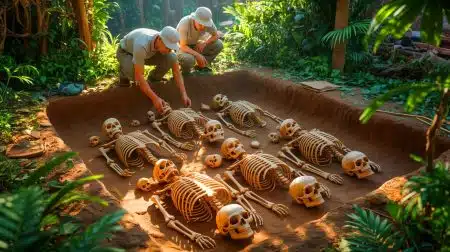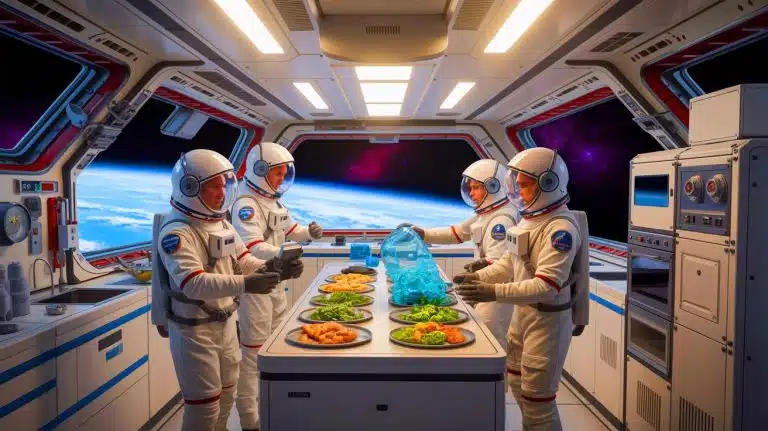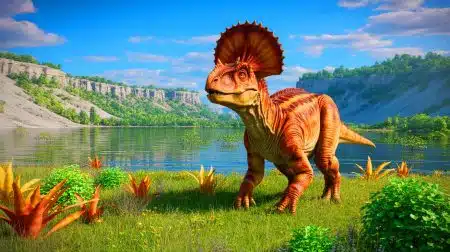| IN A NUTSHELL |
|
As humanity looks to extend its reach beyond Earth, the challenge of sustaining life on long-duration space missions becomes a pressing concern. One intriguing solution being explored is the conversion of plastic waste into edible food for astronauts. This innovative concept, spearheaded by researchers and startups, aims to use advanced technologies like 3D printing to potentially transform how food is produced and consumed in space. The implications for sustainability and waste reduction are significant, providing a glimpse into a future where resourcefulness is key to survival in the harsh conditions of deep space.
The Science Behind Converting Plastic to Food
At the heart of this groundbreaking research is a process developed by a Michigan Tech lab, where scientists are working to break down plastic using microbes. These microorganisms digest the plastic, and their cells are harvested as a potential food source. The idea is to take what would otherwise be waste material and turn it into something of nutritional value. This process is still in its infancy, but the potential benefits are enormous.
Ohio-based startup Beehex is at the forefront of applying this technology, having announced their plans for a bioreactor that can convert plastic into 3D-printed meals. Anjan Contractor, a NASA-affiliated engineer and co-founder of Beehex, is optimistic about the prospects of creating palatable foods from this microbial biomass. The company’s 3D printing technology can customize the texture and flavor of the food, providing a range of options that could include everything from steaks to snacks.
3D Printing: The Future of Space Cuisine
The use of 3D printing in food production is not entirely new, but its application in space missions presents unique challenges and opportunities. The technology employs a specially designed extruder that builds textures and aligns fibers to create food products from the biomass produced by the microbes. This method allows for the addition of essential micronutrients and flavors, making the food not only edible but also nutritious and potentially enjoyable.
In zero-gravity environments, traditional cooking methods are impractical, making 3D printing an attractive alternative. The ability to produce a variety of foods on-demand, using ingredients with extended shelf lives, could significantly enhance the quality of life for astronauts on long missions. Moreover, this technology could reduce the need for resupply missions, conserving valuable resources and energy.
Challenges and Considerations
Despite the promising potential of this technology, several challenges remain. The process is still in the early stages of development, and it is uncertain if the resulting food products would meet federal safety standards. The complexity of the machinery required to produce these foods also poses logistical challenges, especially in the limited space available on spacecraft.
Moreover, while the Department of Defense has shown interest in funding this research, NASA has yet to commit to integrating such systems into their missions. The agency is currently focused on other projects, such as the Deep Space Food Challenge, which aims to develop sustainable food production systems for space travel. This competition encourages innovation and the development of low-waste, high-efficiency solutions that could complement or integrate with existing technologies.
The Wider Implications for Space and Earth
The development of plastic-to-food technology holds promise not only for space exploration but also for addressing waste management issues on Earth. By finding new ways to recycle and repurpose plastic, we could reduce environmental pollution and create a sustainable food source for populations in need. This dual benefit highlights the importance of continued research and investment in such technologies.
As researchers and engineers work to refine these processes, the potential impact on both space missions and global sustainability efforts is enormous. This innovation represents a step towards a circular economy, where waste is minimized, and resources are maximized. The question remains: how soon can we overcome the technical and regulatory hurdles to make this vision a reality?
As we look to the future, the prospect of converting waste into food raises important questions about sustainability and resource management. Could this approach revolutionize how we think about food production and waste reduction, both in space and on Earth? The answers could shape the future of exploration and environmental stewardship for generations to come.
Did you like it? 4.7/5 (24)







Wow, turning plastic into food? That’s some serious sci-fi stuff! 🚀
How safe is the plastic-to-food conversion process for astronauts?
Finally, a way to make use of all those plastic bottles! 😄
Is this technology scalable for use on Earth, or is it only practical in space?
How does the taste compare to real food? Asking for a friend… 🍽️
This sounds amazing, but what about the nutritional value of the food?
Can this process handle all types of plastic, or only specific kinds?
Isn’t the idea of eating plastic-derived food a bit unsettling? 🤔
Thank you for sharing this fascinating research! 🌍
When can we expect to see this technology used in actual space missions?
Just because you can eat it doesn’t mean you should… 😅